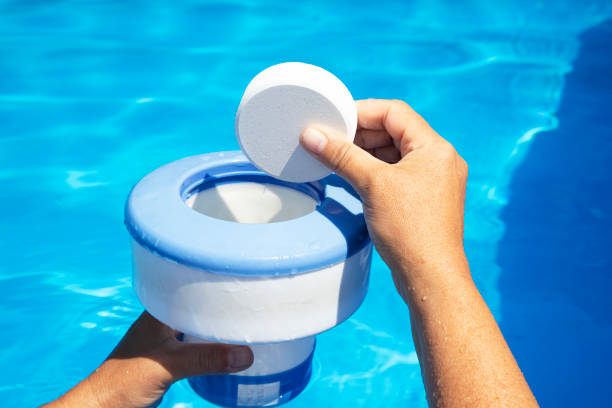Understanding the Differences: Powder Coating Temperature vs. Spray Coating Application
Introduction to Powder Coating and Spray Coating;
When it comes to finishing surfaces, two methods often come into play: powder coating and spray coating. Both have their unique charm and applications, yet they operate on different principles that can significantly impact the final result. Whether you’re looking to enhance durability or achieve a dazzling finish, understanding these differences is crucial for making informed decisions.
As industries evolve, the demand for effective surface treatments grows. Choosing the right method not only affects aesthetics but also longevity and performance. So why should you care about temperature in powder coating versus spray application? The answer lies in knowing how each technique operates and what suits your project’s specific needs best.Let’s dive deeper into these fascinating processes and explore how they stack up against one another!
Understanding the Basics: What is Temperature in Powder Coating vs Spray Coating?
Temperature plays a crucial role in powder coating and spray coating applications. In powder coating, the process involves applying dry paint particles to a surface and then curing them at elevated temperatures. Typically, this curing occurs between 350°F and 400°F (about 180°C to 200°C). The high temperature melts the powder, allowing it to flow out evenly and form a durable finish.
On the other hand, spray coating generally uses liquid paints or coatings that do not require such extreme heat for application. Instead, these coatings are often air-dried or cured through chemical reactions at room temperature or slightly higher. This method allows for more flexibility in terms of colors and textures but may result in less durability compared to its powdered counterpart.
Each technique has distinct characteristics influenced by temperature settings that impact bonding strength, drying times, and overall finish quality on various surfaces.
Advantages and Disadvantages of Powder Coating Temperature;
Powder coating temperature plays a crucial role in determining the quality of the finish.Powder coating is a popular method of applying a protective finish to various metal surfaces. It involves electrostatically charging powdered particles and then spraying them onto an object, which is then cured in an oven. One important aspect of powder coating is the temperature at which it is applied and cured. In this section, we will discuss the advantages and disadvantages of powder coating temperature.
Advantages:
1. Durability: The biggest advantage of powder coating is its durability. When the powder particles are heated in the curing process, they melt and fuse together to form a strong bond with the surface. This results in a highly durable finish that can withstand harsh environments, chemicals, and extreme temperatures.
2. Uniformity: Powder coating provides a smooth and uniform finish on all surfaces, even those with complex shapes or hard-to-reach areas. This is because the charged particles are attracted to every part of the surface, ensuring complete coverage without any drips or runs.
3. Cost-effective: Powder coating offers significant cost savings compared to traditional liquid coatings as it produces less waste during application. Additionally, oversprayed powder can be collected and reused, reducing material costs.
4. Environmentally friendly: Unlike traditional liquid coatings that contain harmful solvents, powders do not emit volatile organic compounds (VOCs) into the atmosphere during application or curing process making it more environmentally friendly.
Disadvantages:
1. Limited color options: Powder coating has limited color options when compared to spray paint applications due to restrictions on pigment size and heat sensitivity during curing process.
2. Difficult touch-ups: While touch-ups are possible with liquid coatings by simply blending in new coats with existing ones; this isn’t as easy for powdered coatings since they require high temperatures for proper adhesion.
3. Higher initial setup cost: Powder coating requires specialized equipment such as ovens and spray guns which increases initial setup costs compared to traditional paint applications.
4.Longer curing time: Powder coating requires a longer curing time compared to other painting methods. This can result in longer production times and higher labor costs.
Powder coating offers numerous advantages such as durability, uniformity, cost-effectiveness, and eco-friendliness. However, it also has some limitations like limited color options, difficult touch-ups, and higher initial setup costs. When deciding between powder coating temperature vs spray coating application, it is important to consider these factors and choose the method that best suits your project’s needs.
Advantages and Disadvantages of Spray Coating Application;
Spray coating application offers versatility that appeals to many industries. It can be used on a variety of surfaces, making it ideal for both large projects and intricate designs. The process allows for even coverage, reducing the risk of drips or runs.Spray coating application is a popular method for applying coatings onto different surfaces. This technique involves using a spray gun to atomize the coating material into fine particles and then spraying it onto the surface. While this method has its advantages, it also comes with some disadvantages that should be considered.
Advantages:
1. Uniform Coverage: One of the major benefits of spray coating application is its ability to provide uniform coverage on complex and irregularly shaped surfaces. The fine particles produced by the spray gun can easily reach every nook and corner, ensuring an even coat over the entire surface.
2. Fast Application: Compared to other coating methods, such as brush or roller application, spraying is much faster and more efficient. This makes it an ideal choice for large-scale projects that require a quick turnaround time.
3. Versatility: Spray coating can be used on a wide range of materials, including metal, plastic, wood, and glass. It also allows for various types of coatings to be applied, such as paints, lacquers, varnishes, and sealants.
4. Cost-Effective: In addition to being a fast process, spray coating is also relatively cost-effective as it requires minimal labor compared to other methods like hand painting or electrostatic coating.
5. Smooth Finish: Since the particles are evenly distributed during spraying, this method results in a smooth finish without any visible brush marks or streaks.
Disadvantages:
1. Overspray: One major drawback of spray coating application is overspray – when excess particles land outside the intended area causing wastage and possible environmental hazards if not properly contained.
2. Health Hazards: The atomized particles from the spray gun can pose health risks if inhaled by workers not wearing proper protective gear during application.
3. Environmental Impact: As mentioned earlier, overspray can lead to environmental concerns if not managed correctly. Additionally, some coatings contain volatile organic compounds (VOCs) that can contribute to air pollution.
4. Equipment and Maintenance Costs: Spray coating application requires specialized equipment like spray guns, compressors, and ventilation systems that need regular maintenance and replacement parts – which can be costly.
5. Skill Required: Unlike brush or roller application, using a spray gun requires training and practice to achieve the desired results without overspray or uneven coverage. This additional skillset may require an investment in time and resources for employees.
While spray coating offers significant advantages in terms of speed, versatility, and finish quality – it also comes with its own set of challenges such as overspray, health hazards, environmental impact, equipment costs, and the need for skilled operators. Carefully considering these factors will help determine if this method is best suited for your specific project needs.
Factors to Consider When Choosing Between Powder Coating Temperature and Spray Coating Application;
When choosing between powder coating temperature and spray coating application, several factors come into play. First, consider the material you’re working with. Some substrates react differently to heat.When it comes to choosing between powder coating temperature and spray coating application, there are several factors that need to be considered. Both methods have their own advantages and disadvantages, and the decision ultimately depends on the specific needs of your project. In this section, we will delve deeper into these factors to help you make an informed decision.
1. Material Compatibility:
One of the most important factors to consider is the compatibility of the material being coated with either method. Powder coating works well with a wide range of materials such as metal, plastic, wood, and even glass. On the other hand, spray coating is typically used for materials like paper or fabrics. Therefore, if your project involves non-metallic surfaces or delicate materials, spray coating would be a more suitable option.
2. Coating Thickness:
Another crucial factor to consider is the desired thickness of the coating. Powder coating tends to create a thicker layer compared to spray coating due to its electrostatic bonding process. This makes it ideal for providing durable protection for objects that will be subjected to harsh environments or frequent use. However, if you only require a thin layer of coating for aesthetic purposes or mild protection, then spray coating may suffice.
3. Efficiency and Speed:
Time constraints can also play a role in deciding between powder coating temperature and spray application methods. Generally, powder coating requires more prep time and equipment setup but offers quicker curing times compared to traditional wet paint systems used in spray coatings. If you have a high-volume production line where efficiency is key, then powder coating would be more beneficial.
4. Environmental Impact:
Both powder and spray coatings can potentially release harmful VOCs (volatile organic compounds) during their application process which pose a risk not only to human health but also contribute significantly towards air pollution levels. However, advancements in technology have allowed for eco-friendly options in both methods by using low-VOC formulations in powders or water-based paints in sprays.
5. Cost:
The cost of each method must be taken into consideration. Powder coating requires more initial investment in equipment and materials but is more cost-effective in the long run due to less material waste and quicker production time. Spray coating may have lower upfront costs, but it can result in higher ongoing expenses for maintenance and replacement of spray guns.
When choosing between powder coating temperature and spray coating application, it is essential to consider material compatibility, desired thickness, efficiency and speed requirements, environmental impact, and overall cost. By carefully evaluating these factors based on your project’s specific needs, you can make an informed decision that will yield optimal results.
Tips for Achieving Optimal Results with Both Methods;
To achieve optimal results with powder coating, ensure your surface is thoroughly cleaned. Any debris can compromise adhesion and finish quality.When it comes to achieving optimal results with both powder coating temperature and spray coating application methods, there are a few key tips that can make all the difference. While both techniques have their own unique advantages, they also have specific considerations that must be taken into account for the best outcome. Here are some tips to help you get the most out of both methods:
1. Prepare your surface properly: One of the most important factors in achieving a successful coating is proper surface preparation. This includes cleaning the surface thoroughly to remove any dirt, grease, or other contaminants that may interfere with adhesion. It is also crucial to ensure that the surface is free of any rust or corrosion before beginning either powder coating or spray coating.
2. Consider environmental conditions: Both powder coating and spray coating can be affected by environmental conditions such as humidity and temperature. For powder coating, it is recommended to apply at temperatures between 65-80°F with low humidity levels for optimal results. On the other hand, spray coatings can be more sensitive and may require a controlled environment with minimal dust or drafts.
3. Use appropriate equipment: The type of equipment used for both powder and spray coatings can greatly impact the final result. When using a powder coater, make sure it is equipped with adjustable airflow controls and an even distribution system for consistent coverage. For spray coatings, consider using professional-grade HVLP (high volume low pressure) guns for better control over the amount of material being applied.
4. Follow recommended curing time and temperature: Curing refers to allowing enough time for the coated object to fully dry and harden after application. For powder coatings, this typically involves heating at specific temperatures for a set period of time according to manufacturer guidelines. Similarly, some types of liquid coatings may require curing in ovens at designated temperatures before they can achieve their full potential.
5.Use protective gear: Both powder coating powders and liquid paints contain chemicals that may be harmful if inhaled or come into contact with the skin. It is important to always wear proper protective gear, such as gloves and masks, when handling these materials.
By following these tips, you can ensure that you achieve optimal results with both powder coating and spray coating methods. Remember to always consult manufacturer guidelines and use high-quality products for the best outcome. With proper preparation and attention to detail, your coated objects will have a professional finish that is both durable and visually appealing.
Conclusion:
Choosing between powder coating temperature and spray coating application ultimately depends on your specific needs and circumstances. Both methods have unique benefits that can cater to various projects.
Powder coating offers a durable finish, great for items exposed to harsh conditions. Its ability to withstand chipping and scratching makes it ideal for outdoor furniture or automotive parts. Additionally, the process is more environmentally friendly since it produces less waste.On the other hand, spray coating is versatile and easier to apply in tight spaces or intricate designs. It also allows for a broader color range and finishes, making it suitable for artistic endeavors or custom jobs.
Consider factors such as project size, desired finish quality, budget constraints, and environmental impact when deciding which method aligns best with your objectives. Each approach has its merits; the right choice will lead you toward achieving exceptional results tailored to your vision.
Keep an eye for more news & updates on DiscoverTribune !






